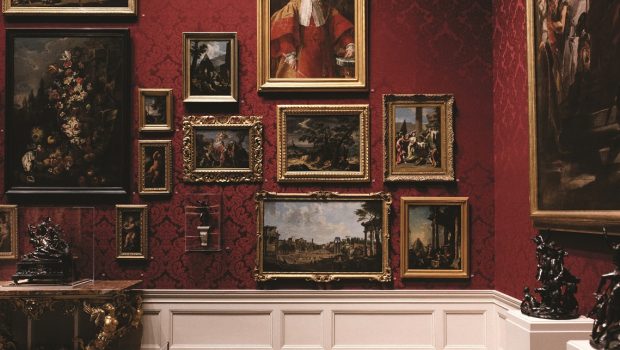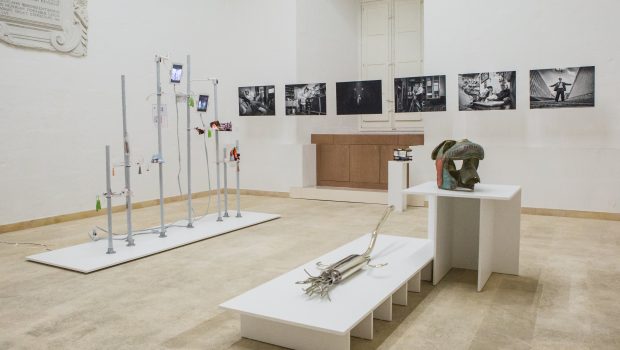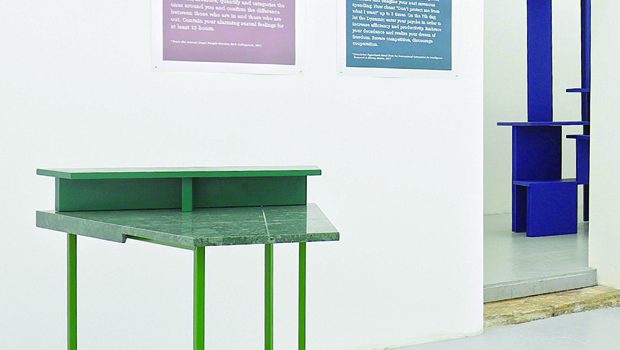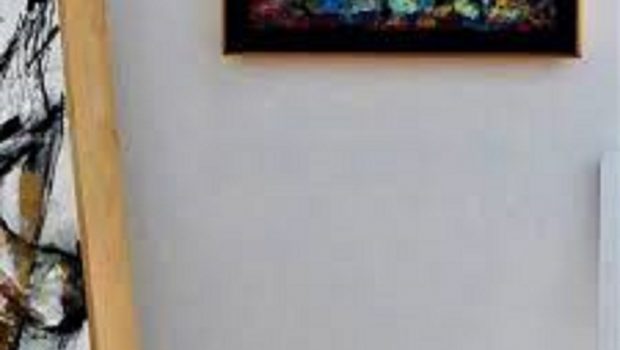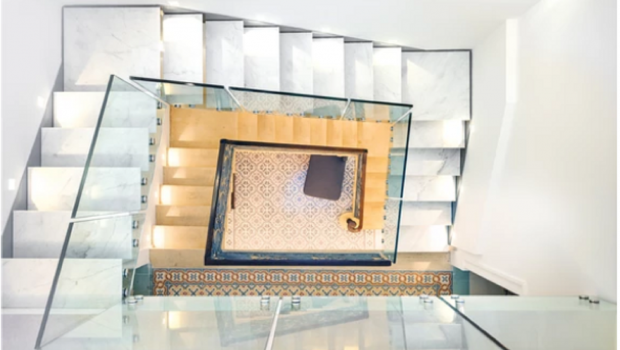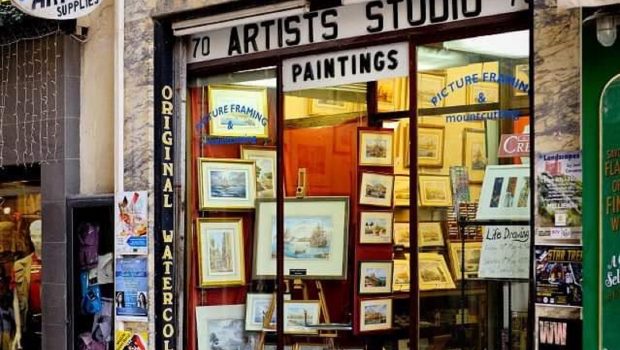Girl, Interrupted.
Smudged and smeared; dripping, spilling; pulled by gravity; heavy and weighty, yet simultaneously light and wispy

There is scarcely a figure in Karen Caruana’s Vernacular repertoire that can be defined as ‘complete’. Blurred, displaced ‘skins’ are stretched across the surface, often diffusing into nothingness, merging into the background and environment in which they are placed, yet to which they don’t seem to belong. These forms inhabit her canvases but they are snapshots out of dreamscapes, juxtaposed over familiar, idyllic and often impossibly quaint Maltese scenes. Karen has brought ‘the two’ together – creating what would be an impossible marriage under any other circumstances and yet one that inevitably works: harmoniously, deliciously and candidly.

Her work sits somewhere between illustration and photorealism – the modelling of form, and the three-dimensionality of the latter, with the often exaggerated features and pop qualities of the former. There is a dominance of pinks, pastels and mints, as well as a general feeling of bright and even highlighter tones that characterise her work: not necessarily overt, yet always embedded in the layers of paint. So much so, in fact, that I can’t help but coin the phrase ‘Karen Pink’ – especially when it is used as a perfect flat ground for her scenes. Sweet sunset/sunrises or ominous predictions: methinks, the latter.
Karen explains that she finds the current ‘war’ against the urban and rural environment exceedingly frustrating. She is not vocal: she doesn’t air her concerns in writing or via social media, she airs them through the images she fabricates. Many of the settings and backgrounds to her figures are representations of her hometown – on the outskirts of Zejtun – scenes she fears are under palpable threat. This is the reason why there is more than a dash of nostalgia prevalent in her paintings – nostalgia coupled with apprehension and a sense of urgency, that is. Her state of mind and her emotions are referred to time and again – most notably through symbols such as the frail paper boats, for instance.
It is easy to be drawn to Karen’s work. Her style and aesthetic are so distinct and recognisable; her fantastical dreamscapes are so akin to some surreal adult fairytale book. And yet I struggle to get my head around the fact that this is her debut show – 10 years in the making, she confesses. Her name and work have, however, been a constant in collectives, which only reinforces the timing of the show. Her work was decidedly ripe for the picking and needed to be shown.
The truth be told, the Vernacular series could have easily been broken down into smaller collections each of four or five works. Her method seems to point towards a need or a desire to exhaust a theme, hence the repetition of subjects as well as titles. I specifically refer to the Blurred Boundaries series, in which multiple severed heads dominate her surfaces. They ‘sit’ atop landscapes, they float in space, they hover above waves. It’s impossible to tell how many faces stare out at us.

In the fifth work of the series, one dramatically exhibited in silo, in a darkened annex of the gallery, I look at the eight (or more) figures in the painting. Some challenge my gaze whilst others look away and I’m easily drawn in. The concept is simple: where does one begin? Where does one end? It’s a never-ending series of influences: cultural, social and ancestral.
Karen’s work can easily be described as both meticulous and calculating. Each brushstroke sits alongside or atop another. Each smudge is succinctly smeared. Perfect parallels mimic an elongated form of pixilation. Her work invites you to look closer, deeper. Details take on a kaleidoscopic and psychedelic effect.
Broken down into segments, her paintings contain portions of pure abstraction, enhanced by a widely rich and varied palette. I use the word ‘abstraction’ cautiously – because there is nothing abstract or abstracted in Karen’s work, apart from the details one chooses to zoom into.
Essentially, the protagonists of the Vernacular series are girls (mainly), unabashed in their childish nudity, devoid of sexual innuendo or connotation: bare, rather than nude or naked – fleshy, even. Each imaginary form is placed in a very real landscape, so no wonder the disjointedness, the surrealism: postcard pictures interrupted by gravitating (celestial?) bodies – or perhaps it’s the other way around and the settings are interrupting the actions of her figures? Maybe it’s neither – maybe these dreamscapes are simply interrupting Karen’s reality or, just maybe, her reality needs interrupting.
Vernacular, curated by Sabrina Calleja Jackson, was on show at the Malta Society of Arts in Valletta in May this year.


